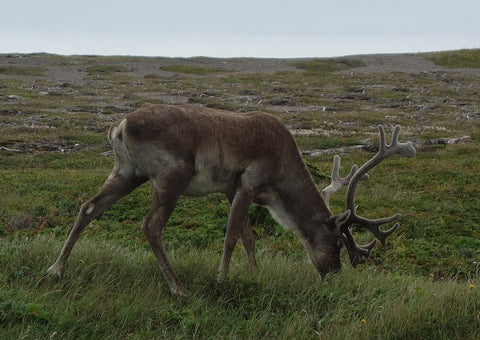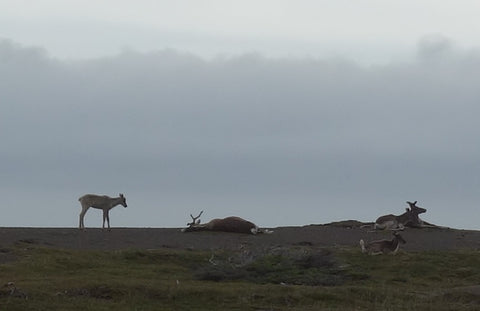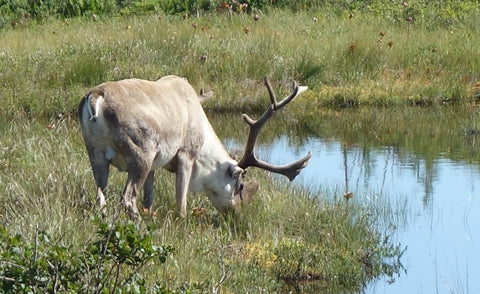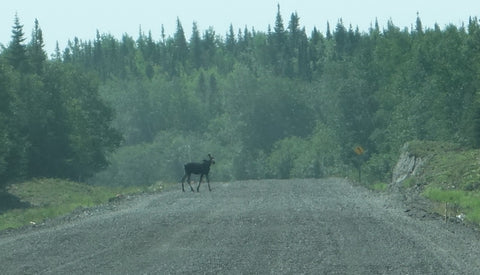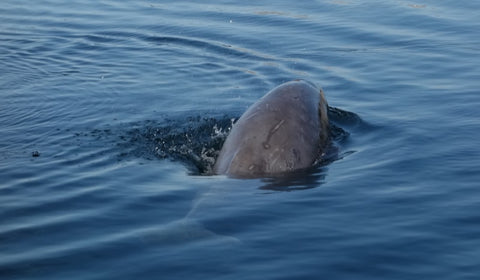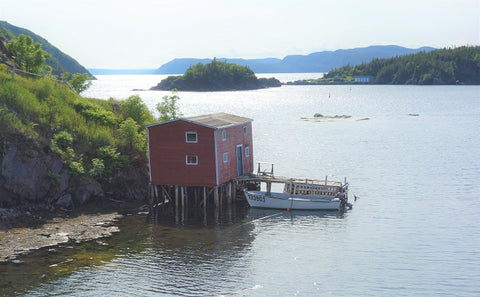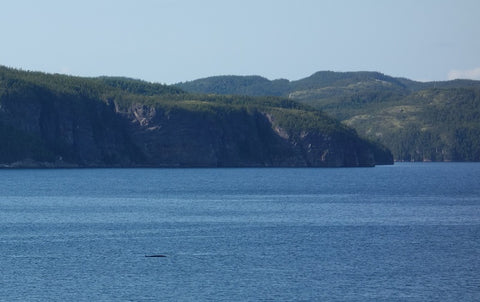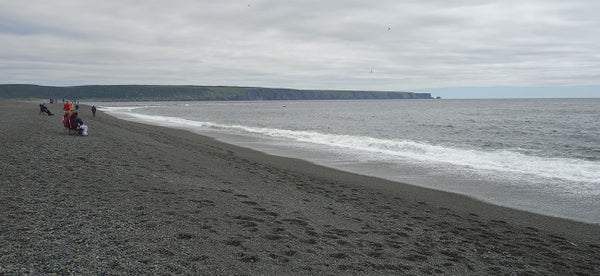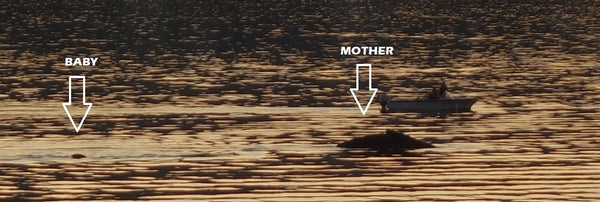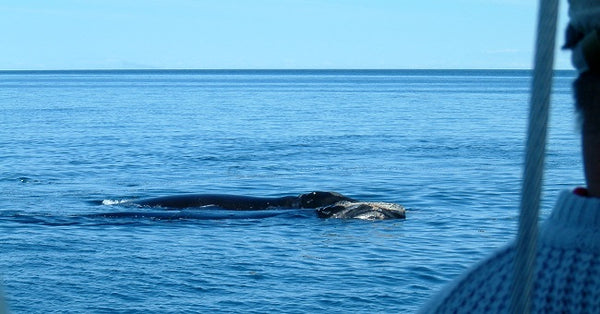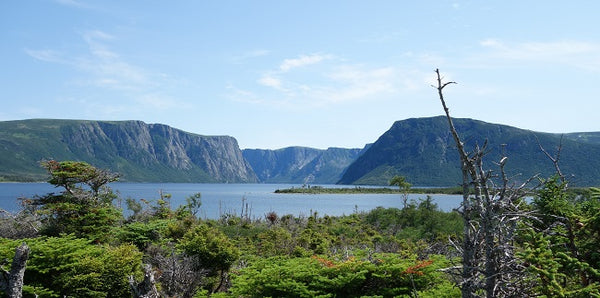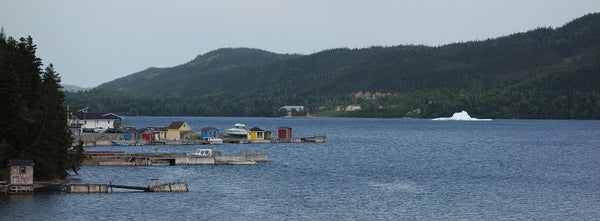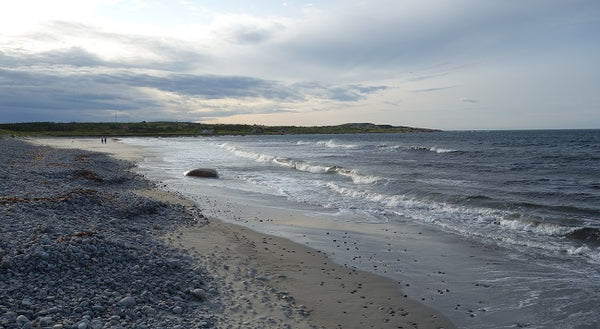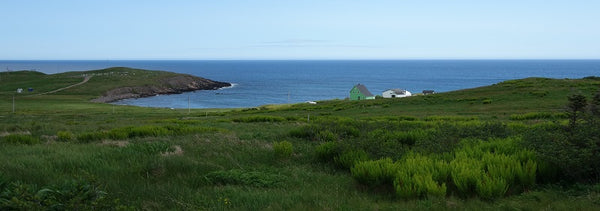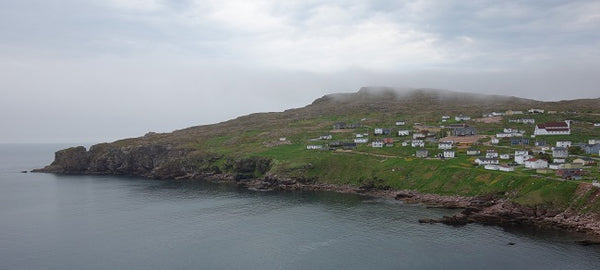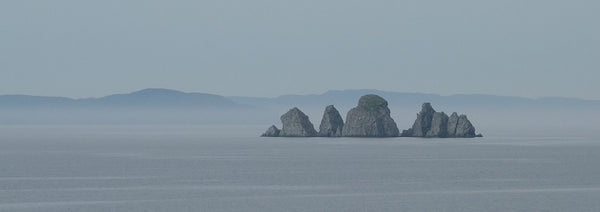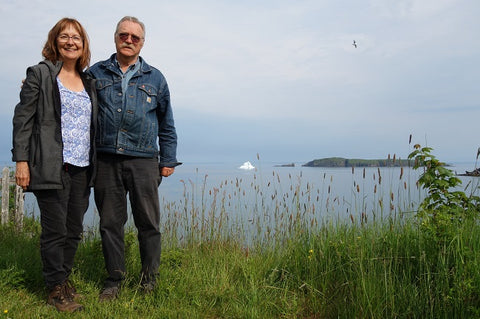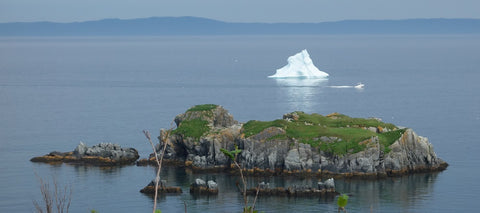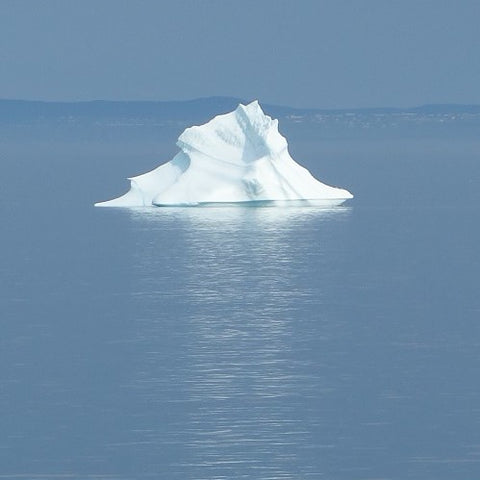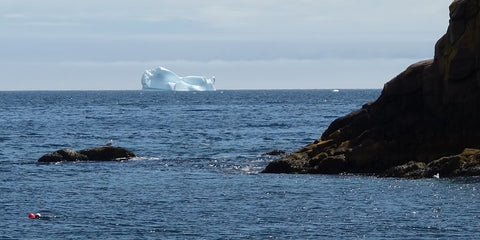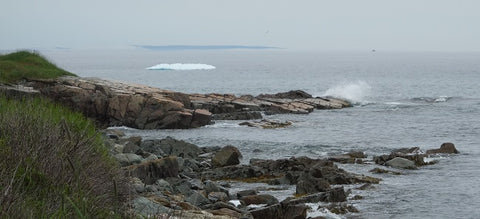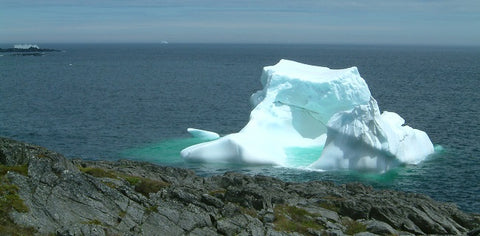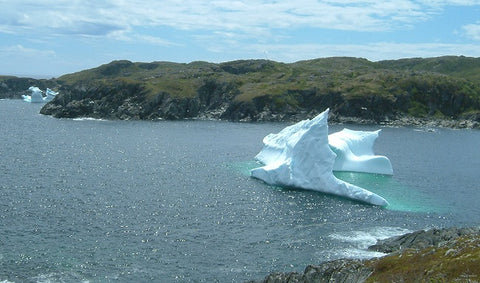
Shown above are the three watercolours I completed last month. They form an eclectic group, with each painting having been inspired by a different journey. The trait they share is that I have wanted to paint these subjects for a while, sometimes years, and I finally got around to it this winter.

The smallest painting, 'Frozen Two', watercolour on panel (no glass) 6 x 12" is shown above and pictures an ice falls that forms each year near Lake St. Peter, ON. I photographed the icy cliff while snowmobiling several decades ago (photo shown below) and always thought this scene would make a dramatic painting subject.

I am drawn to the contrast of dark brown rock and light blue icicles, so I enhanced this colour scheme and value contrast in the painting. I added the deer to the picture to give a sense of scale and a spark of life. Shown below is me in my studio working on this piece.

Disney's latest cinema blockbuster, Frozen II was playing in theatres during the time I was creating this watercolour. I couldn't resist the play on words when I was searching for a title for this sweet little painting.
Click here for more information about Frozen Two.
My next two pieces are from trips to the East Coast of Canada. 'Reflections of Yesterday', watercolour on panel (no glass) 12 x 16", is shown below.

In the spring of 2017, my husband and I and several friends explored New Brunswick, Nova Scotia, and Prince Edward Island for two months in our travel trailers. I posted three stories showing the highlights of this fantastic trip ('Perfect Prince Edward Island', 'Camping in Beautiful Nova Scotia', and 'Top 5 Must-Have's for Travel Fun').
While exploring the quaint seaside village of Victoria in PEI, I photographed this colourful, weathered shed window from five different angles. The two views shown below are the ones I chose as painting references.

I liked the colours in the red window trim better in the left hand photo, but I preferred the reflection of the jellybean house in the right hand photo. One of the advantages of being a painter is that I can 'mix-and-match' my references.
Every inch of this painting was pure joy to create, from the cracks in the wood shingles, to the flaking red paint of the trim, to the distorted reflections in the old window glass. I am trying a new brand of watercolour paints this winter. They are made by Sennelier in France and I am very impressed with their clarity and strength of colour. The three pigments I chose (Sennelier Red, Sennelier Yellow Deep, and Phthalocyanine Blue) worked perfectly for this piece.
Click here for more information about Reflections of Yesterday.

The next new painting, 'Yesterday's Dreams', watercolour on panel (no glass) 14 x 11", is shown above. I used the same three paints to create all the colour mixtures for this scene.
Last summer, by husband and I spent three months touring the island of Newfoundland in our travel trailer. You can read about key adventures and see highlights of the trip in these posts: 'Icebergs of Newfoundland', 'Top 14 Vistas of Newfoundland', 'A Whale of a Tale in Newfoundland', and 'Seeing Caribou and Moose in Newfoundland'.
While exploring the back roads of the Bonavista peninsula in northern Newfoundland, we came across this gas pump on its concrete pad, smack in the middle of a field of grass, in the tiny settlement known as Red Cliff (photo below)
The price on the pump was 75 cents a gallon, so it probably made its last sale in the 1970’s, before the metric system was adopted in Canada. Any surrounding buildings were long gone. On the shore beyond, a row of houses and fishing sheds had succumbed to wind and rain. I could imagine a story here about the folk who lived and worked in this beautiful place. I knew this would make a fine painting subject.
The grass was finicky to paint, using many layers of masking fluid and paint to achieve the effect of individual blades of grass. The rusty gas pump was an absolute joy to portray in watercolour. I used a magnifying glass and super fine Micron pens with archival ink to do the lettering on the pump.
Click here for more information (including a close-up photo) about Yesterday's Dreams.

The final new painting to show you today is a commissioned piece titled 'Summer Constellations' watercolour on panel (no glass) 6 x 12". The client had seen an earlier painting I did of this scene, fell in love with it, but was disappointed when it was acquired by another client. The problem was solved by my painting a similar version. The first painting, 'Evening Constellations', (2018) shown below, was the same size.

For more information about Summer Constellations, click here.
That wraps up my latest creations. I hope you have enjoyed this glimpse into how I translate photos from my travels into unique artistic expressions. My hope is that my artwork will welcome viewers like old friends, and draw them into the narrative behind the art. Stay tuned to see what old friends February brings!
If you have comments you wish to share, please do so using the 'Leave a Comment' button at the top of this post.
Subscribe to Karen's Newsletter for exclusive early access to new work, studio news updates, travel tales, painting tips, and notices of upcoming exhibitions.




